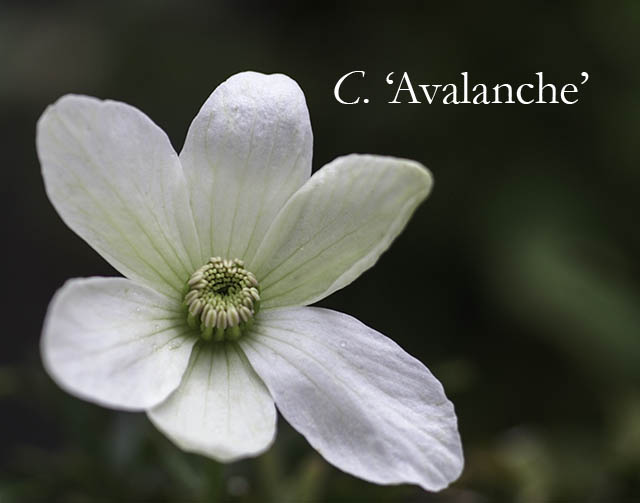I was amazed to discover how many unusual common names have attached themselves to the clematis species over the years. Those that I found include: Traveler’s Joy, Love Vine, White Vine, Ladies’ Bower, Old Man’s Beard, Pipestem, Smokewood, Wild Vine, Wind-with, Devil’s Darning Needles, Hedge Vine, Blue Jasmine, Satin Curls, Curlyheads, Snow-in-harvest, Vasevine, Leather flower, Ropevine, Smoking-cane, Devil’s Thread, White clematis, etc., but the most widespread common name is the Virgin’s Bower. I have yet to find a definitive answer for why clematis are often collectively known as the “Virgin’s Bower”, but what I did discover should give us some understanding as to why this moniker was chosen.
The Word Virgin
There are two possibilities when it comes to who the name “virgin” was meant to honor and those theories are explored by Mr. Jim Fisk in his book book, CLEMATIS The Queen of Climbers, where he wrote the following: “Exactly when the plant came to be known as the virgin’s bower is uncertain, but most people accept that it was named after Queen Elizabeth I, who was known as the ‘Virgin Queen’. Plants of C. viticella, the variety found growing wild in Spain, were bought over to England during her reign, and, it is said, named in honour of the queen. Another idea is that it is named in honour of the Virgin Mary as the wild variety found in Britain, C. vitalba, comes into flower in midsummer at the time of the Feast of the Assumption, or Lady Day during harvest, which is 15 August. There is an old couplet:
When Mary left us here below
The Virgin’s Bower began to blow.”
In the book, A Contemplation Upon Flowers: Garden Plants in Myth and Literature by Bobby J. Ward, he thwarts the Queen Elizabeth I perspective when he wrote: “One of its common names, virgin’s bower, does not allude to Queen Elizabeth I, the Virgin Queen; the name was used for the plant before her time.
On the University of Dayton’s (http://campus.udayton.edu/mary/gallery/exhibits/barrish01.html) website it asserts that Clematis vitalba Virgin’s Bower is a legend. Here is their premise: “According to a German legend, wild clematis sheltered Mary and Jesus during their flight into Egypt.”
The Word Bower
Britannica Concise Encyclopedia states “if there is a distinction between an arbor and a bower, it is that the bower is an entirely natural recess whereas an arbor is only partially natural”. The origin of the word “bower” is derived from the Middle English word ‘bour’, meaning dwelling. This archaic word is presently defined as: A shaded, leafy recess; an arbor. A rustic cottage; a country retreat. A woman’s private chamber in a medieval castle; a boudoir.
So, when you take into account the meaning of the two words that have been used over the years as a common name for clematis in general, one could surmise that some credence could be given to the German legend that centers around the Virgin Mary.
